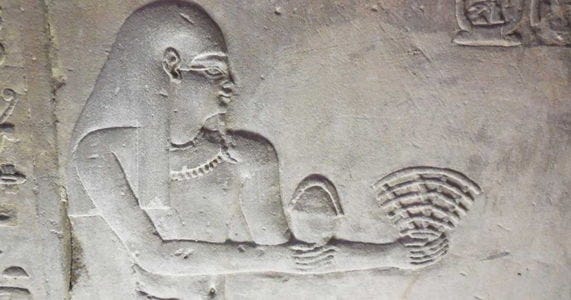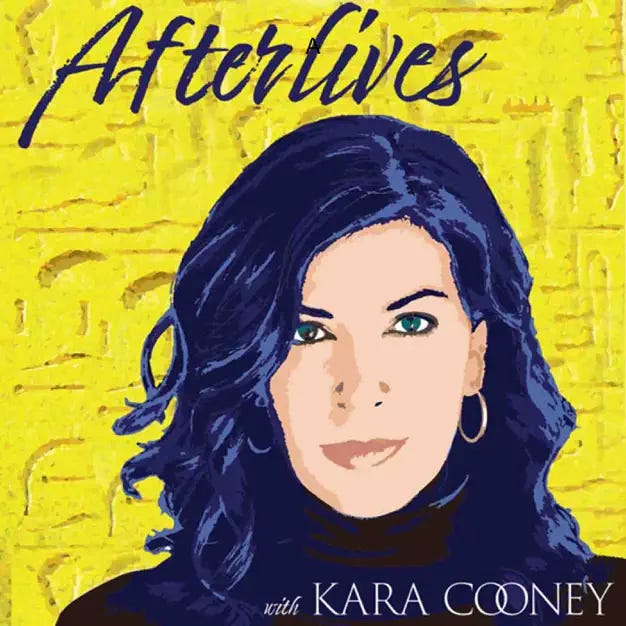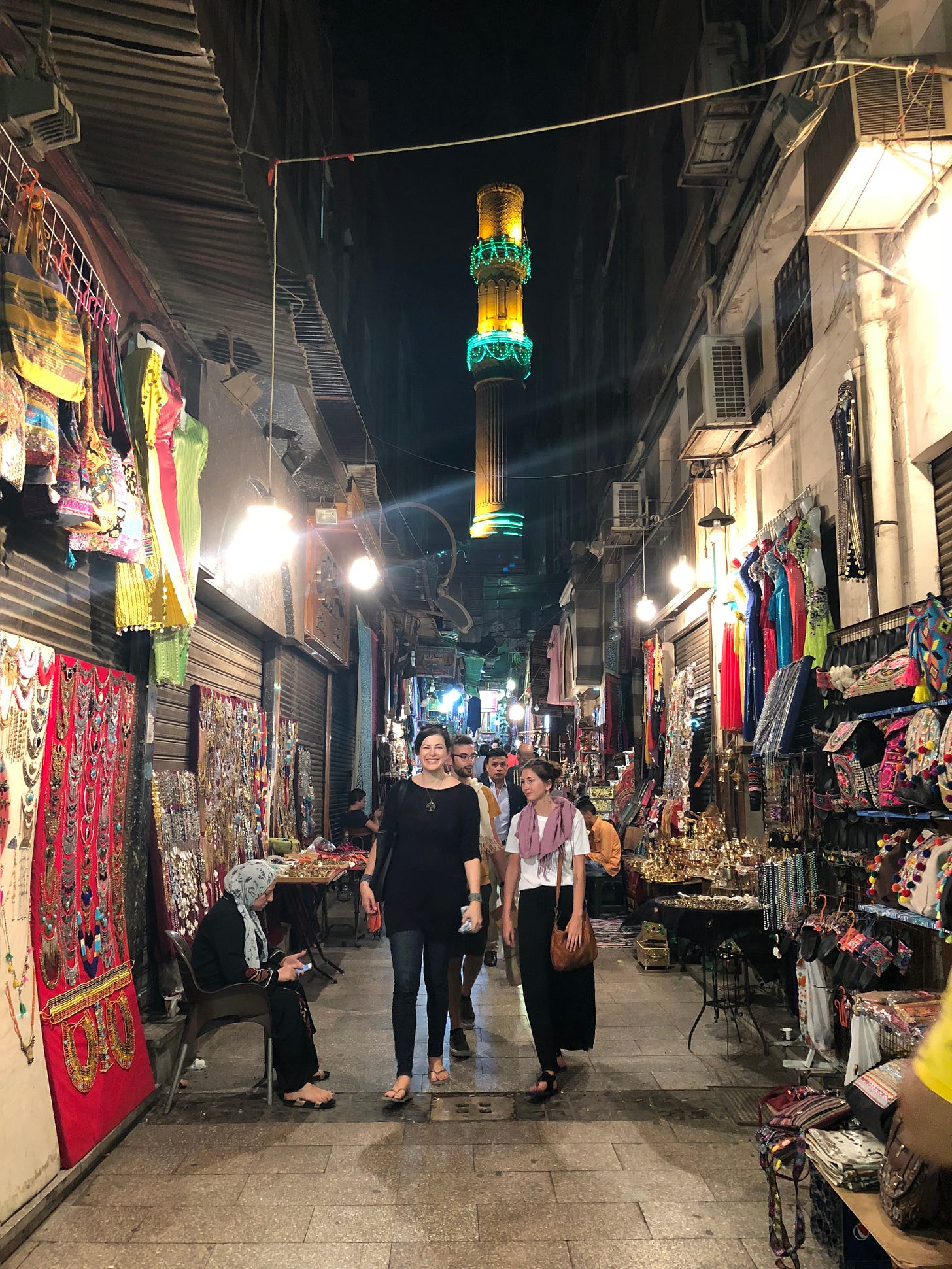So you want to travel to Egypt? - Part II
What to wear, what to bring, and other useful travel tips
In Part II of our “So You Want to Travel to Egypt?!” series, we cover all of the other travel necessaries, from our recommendations on what to wear and what to bring, to more suggestions on which locations to visit outside of Cairo and Luxor (and those that we forgot to mention last time). We’ve linked to products when we can (no, we are not sponsored by any of them—they are just the products we like and use!). This post has a lot of great information, but it is not as comprehensive as what is discussed in the podcast episode, so be sure to listen to Episode #14 of Afterlives of Ancient Egypt!
So you want to travel to Egypt!?! Part II
What to Wear
There is no need to buy a whole new wardrobe when traveling to Egypt. Dress like you normally do—you don’t need to took like a super-tourist in full REI hiking get-up. It’s hot in Egypt, so when you’re packing think about loose clothing and covering up. This advice might feel counterintuitive, but your skin will thank you. A scarf is a great multi-tasking piece: it can cover you in more conservative places, protect your skin from sunburn, keep you warm on a cool night, and act as sweat wiper-upper. Below are our suggestions, but bring your own personal style to Egypt!
Kara’s favorites
Jordan’s favorites
What to Bring

Besides the basics, here are some of the specifics on what to bring that we mentioned on the podcast:
Essential Oil kit—Kara swears by lavender to keep bugs away and oregano for its anti-viral properties.
Sunscreens
Trina Renea sunscreen—a little on the expensive side, but well worth it. It smells amazing and it also hydrating
Color Science Mineral Powder sunscreen—good for frequent reapplication without the liquid mess
Cetaphil Sheer Mineral Face Liquid—Jordan has very sensitive skin and this sunscreen is great
Reusable water bottles & water filters
Insulated water bottles, like Hydroflask or Yeti, are a must have in the heat of Egypt. Nothing is worse than hot tea-water. These bottles help keep your water cool for hours.
Kara’s favorite water filter bottle.
Handy hand fan!
Cellphones, ATM’s, and other Necessaries

Major cellphone companies: Vodafone, Orange, Etisalat, and We
Data is easy to purchase in country; bring your passport to the phone store to get your sim card
Credit cards are not widely taken—make sure to have cash and keep bills of all denominations
ATM’s have a rather low limit given the current inflation, so try to take out as much money as possible. Certain ATM’s, like Bank Misr, have high limits
Other Places to Visit

Cairo
Islamic Cairo—UNESCO World Cultural Heritage site as one of the oldest Islamic cities with many buildings dating back hundreds of years
Mosques—Mosque of Muhammed Ali, Mosque of Amr Ibn Al-As, Mosque of Ibn Tulum, amongst many others.
The Citadel—medieval Islamic era fortification built by Salah ad-Din on the Mokattam hills promontory providing an amazing view of Cairo
Cities of the Dead—part of Islamic Cairo, comprised of two main cemeteries (the Northern Cemetery, or Qarafat ash-sharq, and the older Southern Cemetery, or Bab al-Nasr)
Alexandria
Alexandria National Museum—located in a former Italianite mansion from 1926; contains artifacts from Pharaonic to 20th century Egyptian history
Serapeum and Pompey’s Pillar—temple originally built by Ptolemy III and added to by subsequent rulers. The pillar is not related to Pompey at all…it was actually set up by Diocletian
Catacombs of Kom el Shoqafa—interesting tombs that display the hybridized artistic culture of Ptolemaic and Roman Egypt.
Bibliotheca Alexandria—not the original Library of Alexandria :( but still very impressive in its own right
Citadel of Qaitbay (formerly the location of the Lighthouse of Alexandria)
Tanis—archaeological site in the north-eastern Delta that was the capital of Egypt starting in the 21st dynasty and where the infamous Indiana Jones snakepit scene occurred. It’s also famous for the Tanis royal tomb treasures, which are on par with King Tut’s
Suez Area—perhaps most famous for the canal but also an important site for ancient history as well
Suez Museum—home to the famous Darius Stela, large statue of Senwosret III, and a cool reconstruction of a New Kingdom boat
Ismailia Museum—a great smaller museum near Suez which houses many artifacts from excavations in the area
Desert Oases
Siwa Oasis—urban oases in Egypt’s western desert, perhaps best known for its Amun Oracle that Alexander the Great sought; it has many archaeological sites to visit and Berber culture to see
The other Oases are less easy to get to, but your hotel will be able to help you arrange transportation to the location
Backpacking/camping excursions—like Western Desert Tours
North Coast and Marsa Matruh—beautiful beach resorts away from the hustle-and-bustle of Cairo and Alexandria; visit Marsa Matruh, a major archaeological site with a temple of Ramses II and Ptolemaic structures.
Red Sea Coast—another great place for rest and relaxation at beach resorts, including some great snorkeling; check out cities like Hurghada and El Gouna
Middle Egypt—many of these sites are harder to get to alone; it’s suggested that you hook up with a tour to get to these, but don’t exclude them for that reason.
Amarna & Minya Aten Museum—the museum is scheduled to open this year which is long awaited
Abydos & Dendera—a great day-trip option from Luxor. Make sure to see the Temple of Seti at Abydos with its exquisite carved reliefs and the well-preserved temple to Hathor at Dendera, famous for its zodiac, now at the Louvre.
Edfu—located halfway between Luxor and Aswan, a well preserved Ptolemaic Temple is a must see
Aswan & Elephantine—southern most major city in Egypt; make sure to visit the Island of Elephantine and the tomb at Qubbett al-Hawa. The Old Cataract hotel is a great place for a drink and a view.
Abu Simbel & Lake Nasser—great sights to see when explored via a river cruise, or you can fly straight to Abu Simbel and explore the temple of Ramses II








Egypt is on my bucket list to visit
My husband and I will be visiting Egypt in October, and we just listened to both of the visiting Egypt podcasts. We greatly appreciate all the super useful information you gave. I can’t help but wonder, how on earth does Kara fit all her liquids in a quart-size bag and not check her baggage? SPF, lotion, shampoo, toothpaste, her essential oils, etc. If anyone has tricks for this, I am all ears!
PS I love, love, love her books When Women Ruled The World and The Woman Who Would Be King!!!